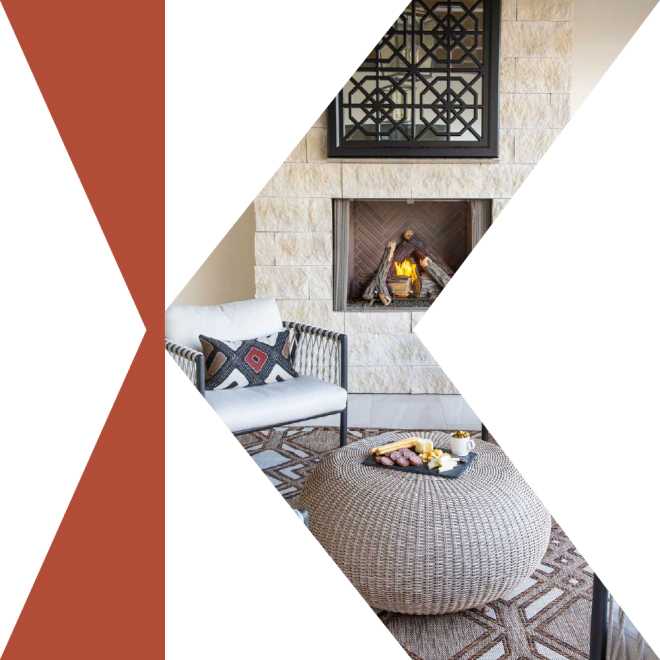Every year Kerrie Kelly Design Lab seeks to find and share the latest interior design trends based on client and manufacturer interaction; in-depth research in partnership with design associations; and business and interior design media interviews. Here is what we have discovered for 2022.
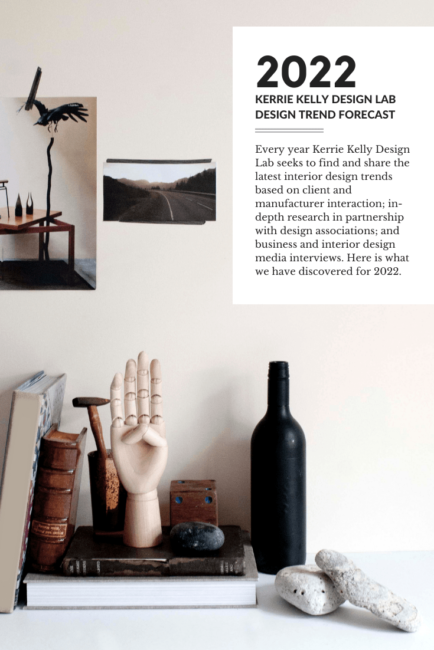
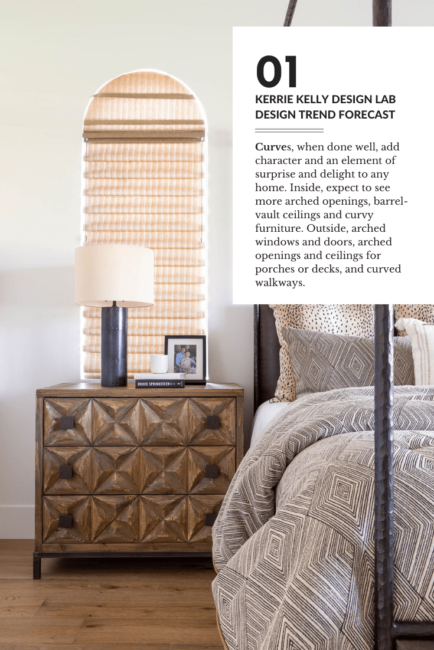
Curves, when done well, add character and an element of surprise and delight to any home. This trend counters the ‘straight-line syndrome’ of recent years. Inside, expect to see more arched openings, barrel-vault ceilings and curvy furniture. Outside, arched windows and doors, arched openings and ceilings for porches or decks, and curved walkways.
We expect to see clients incorporating more natural elements indoors while continuing to embrace a biophilic design philosophy rather than simply mimicking colors “found in nature”. This means an increased use of local, organic materials while maximizing sunlight, fresh air, plants and other natural elements within the home. After two-years working and locking down at home, we will see more place-based relationships between homes and the distinctive geographical and ecological features surrounding the home. Overall, we will also see an integration of natural shapes and forms into our residential architecture.
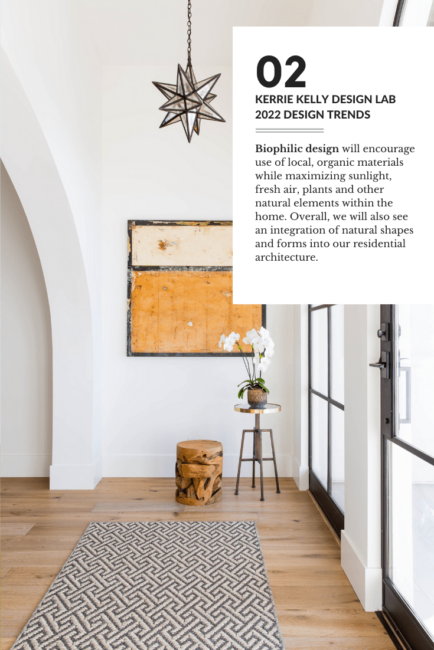
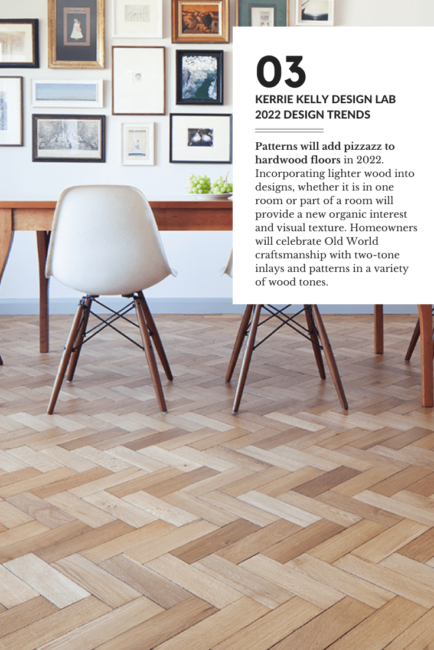
Patterns will add pizzazz to hardwood floors in 2022. Incorporating lighter wood into designs, whether it is in one room or part of a room will provide a new organic interest and visual texture. Homeowners will celebrate Old World craftsmanship with two-tone inlays and patterns in a variety of wood tones. With supply chain interruptions and lumber prices soaring, homeowners will consider upcycling flea market finds of reclaimed wood.
Research shows that overall people prefer a calm life to an exciting life. With this, the home needs to be a safe haven that is restorative and regenerative, especially in our bedroom spaces. Transient spaces (separation among spaces) will help to provide cognitive shifts from work space to living space to resting spaces. Additionally, household characteristics are moving toward a more focused and simple lifestyle. An increase in number of single households and couples (i.e., adults living alone and couples that do not plan to have children) means homes may remain the same size but with a reduced number of occupants, so bedrooms may be used as home offices or for other purposes.
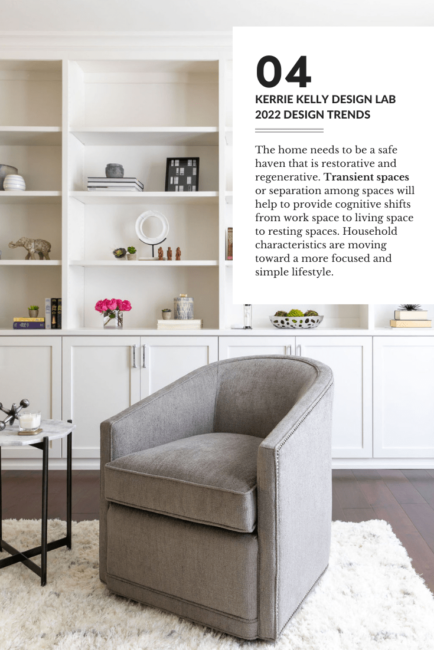
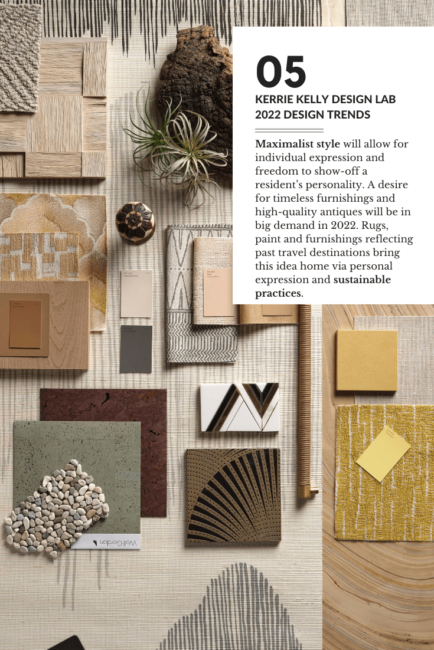
While at first “maximalism” may not initially be thought to connect to wellness, the trend away from minimalism will be embraced as seen in a Boho cottage or an ornate European manor. The amplified style provides individual expression and conveys freedom to show-off a resident’s personality. While availability of new furniture continues to wane, demand for timeless furnishings high-quality antiques will be in big demand. As people are traveling less, they have more expendable income so creative expressions of personality infuse interior design. Furnishings, rugs, art and paint reflecting past travel destinations or future dream locations bring this idea home and “feed the soul” via personal expression and sustainable practices.
Mental health has become a major concern during the pandemic and the focus of many wellness trends at home and at work. Acoustical privacy, air filtration systems and natural light among interior spaces will be essential and we will see more biophilic design, flexible rooms, sliding doors and walls, and sound-scaping applied in home office spaces specifically. Work spaces will also integrate more smart, interactive technologies, while spatial computing will seek to make environments that respond to and support occupants.
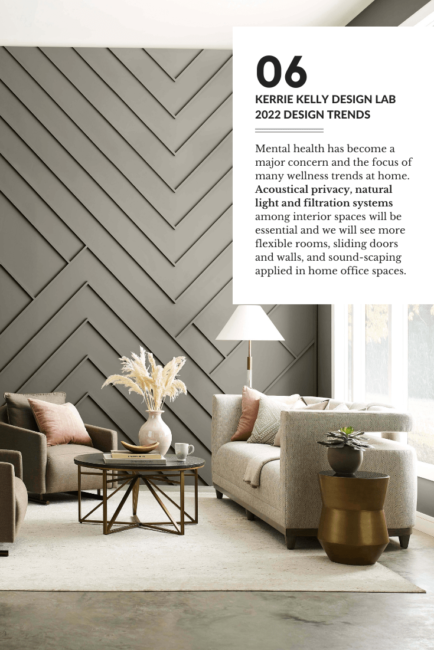
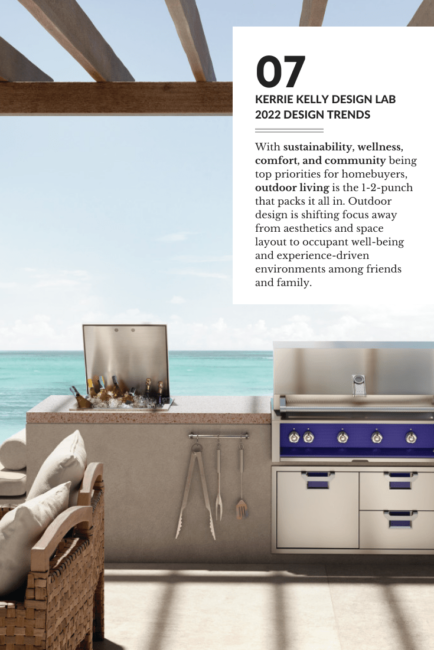
With sustainability, wellness, comfort, and community being top priorities for homebuyers, outdoor living is the 1-2-punch that packs it all in. In 2022, fewer Americans consider material well-being as source of meaning in life, which is a promising trend as climate and sustainability impacts weren’t of priority in residential projects of the past. Clients will be more cautious in their purchase decisions, making more long-lasting, timeless choices with specific brands. Outdoor design is shifting focus away from aesthetics and space layout to occupant well-being and experience-driven environments among friends and family. This includes understanding all types of indoor and outdoor activities of the home—live, work, play, learn, heal—used by all occupants in fuller and deeper capacity.
In kitchens we will look to find anything but white in cabinetry and countertops. Homeowners are tiring of the all-white kitchens and counters and they want to add some color personality. Expect to see painted or wood cabinets in appealing, warm and neutral hues, while countertops will feature alternative low maintenance material choices. Mixing two countertop materials will also gain in popularity, for example, quartz perimeter countertops and hardwood chopping block for the kitchen island.
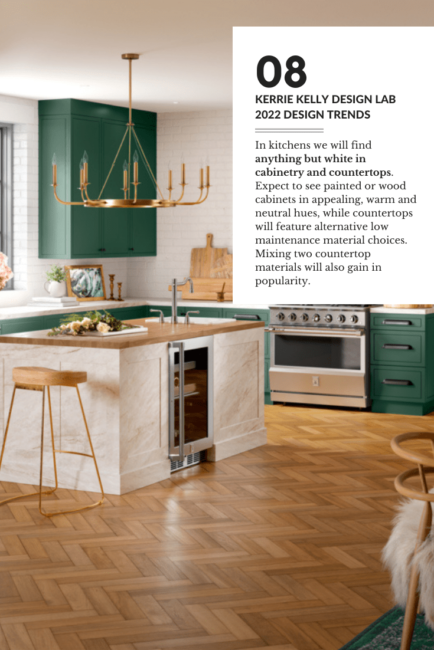
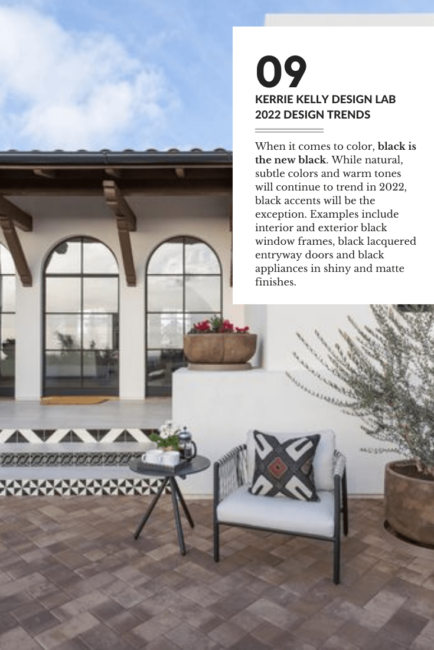
When it comes to color, black is the new black. While natural, subtle colors and warm tones will continue to trend in 2022, black accents will be the exception. Examples include interior and exterior black window frames, black lacquered entryway doors and black appliances in shiny and matte finishes.
As we progress as a society not only in our efforts to fight climate change but also in technology there are innovative practices that are leading the way in wellness and sustainability. These materials are nothing new but are being used in new ways that can help aid our work to ensure that we are doing our part in the architecture and design industry. A big movement we can expect to see grow in popularity in the next few years is 3D-printed homes and buildings. These types of buildings will help reduce the supply chain challenges, which in turn will help reduce the carbon footprint that comes from the travel needed in order to receive those materials. With that, clients are revisiting concrete homes as lumber prices continue to increase. Concrete block constructions deliver benefits such as higher energy efficiency which leads to lower energy bills, strength to better withstand weather extremes (e.g., hurricanes, fires) in a variety of home styles.
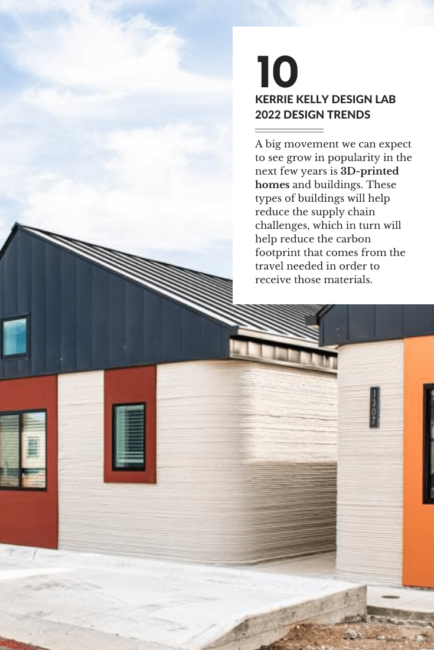
It’s no surprise that home design continues to evolve. The past two years have allowed homeowners to assess what they truly want their home to reflect. As a result, the overarching trends highlight creative expression, design freedom and individuality, so let these findings inspire you as you make your home all your own in the new year! For more 2022 design trend forecast information, join me January 5th at 1pmPT as I chat with Jamie Gold on her Clubhouse channel.

